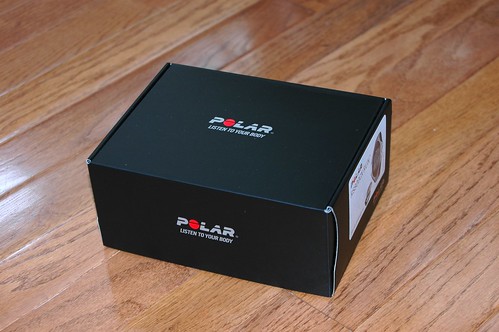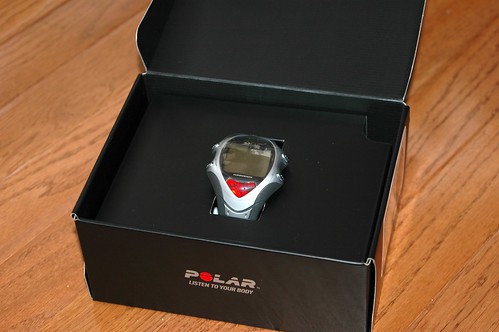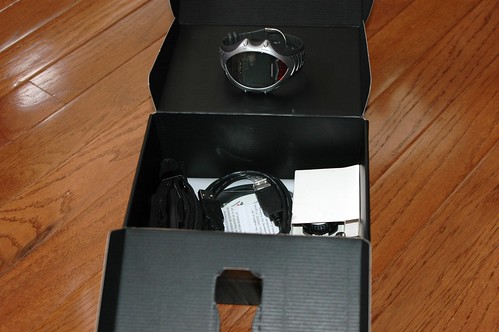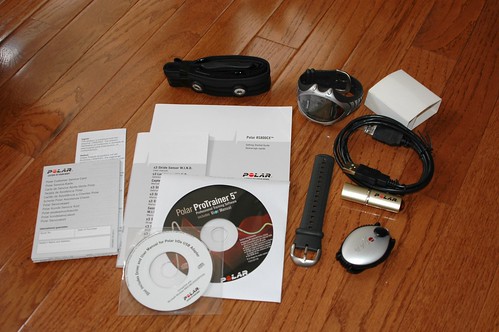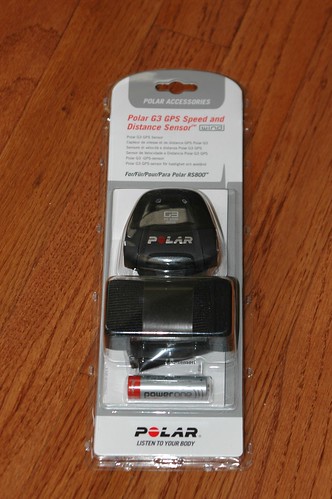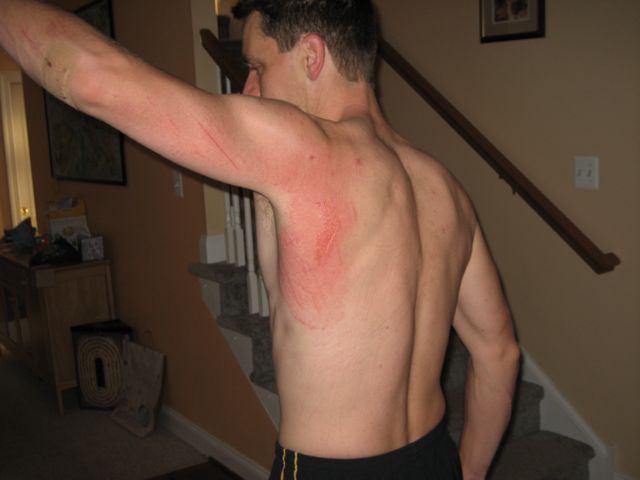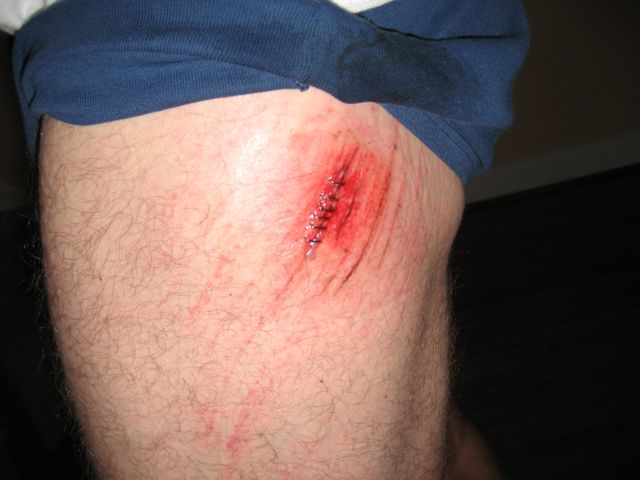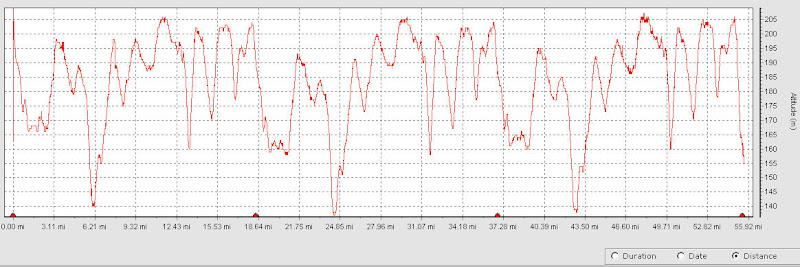Warning: If you have weak stomach don't read all the way down. There are some gross pictures that follow.
Yesterday was the last race of my tri season and it was also my second Half Ironman distance race in September. I wanted to see if I can do it and still place well in my age group. The goal was to give it all and try to improve on the Quakerman 5:07 time. The weather forecast was bleak for few days and on the race morning it was humid and one the way to the race venue I drove through few showers. Looked like another half with lots of rain.
I got to the transition early, but the first rack assigned to my race number was already getting full. I snitched spot at the end of the first of three bars. The rack was very close to swim in and bike out so I liked the spot. At the last moment I decided to move the bike to the other side of the rack to make the transition even faster. We were supposed to get started at around 8am so I went down to do practice swim in the lake at about 7am. I swam for few minutes, practiced sighting, got my heart rate up and then went back to the shore and watched as sprint distance athletes lined-up for the wave start.
Swim 1.2mi (38:27)
The start was on the sandy beach - run into the water. It was fun because there are no stones on the bottom of the lake (unlike the lake Nockamixon). After they started all the sprint waves they had us wait for another more than 30 minutes as someone claimed to hear thunder. I did not hear anything, but they could not let us into the water until another 20 minutes or so. I had thoughts about duathlon at that point, but all turned fine and we were lined-up on the beach and ready to start. Then the starter yelled go and off we went. The on the shore start has one disadvantage - there is a lot of people around you for the first 100 meters or so. I watched around me so I do not get hit or kicked. I accelerated a bit to get out of the big group and then settled into a comfortable pace I can hold for the swim leg. Before we got to the first buoy it was pouring and the visibility was not very good. The rain was with us all the way to the last buoy. When I exited the water I glanced at my watch and saw that I was about 2 minutes slower than in the last race. But not all is lost - there is still plenty of racing to make up the time. After discussion with my coach and looking at the race results it seems that the buoys drifted a bit and the course was a tad longer than 1.2 miles.
Bike 56.6mi (2:49:45)
The run to the transition was long, but the overall business in transition was quick - I put on my helmet, grabbed my bike and off I went. I did not lose any time in the transition although my transition time of 2:14 seems quite long, but it is not bad - the best transition time that day was 1:53. The bike start was fairly easy and I did not strain. On the way out of the park I passed one or two people and then before I got to the I-78 I passed few more people. Then the rain started and would not stop until almost the end of the bike. Oh well what can you do - just take it slower in the curves and keep going on the straightaways. Everything was feeling right during the bike and I passed few people and got passed by one guy who was looking very strong. On the descend to Frenchtown at mile 12 I slowed down as they advised us and then as I was going through the town there was a very slowly moving car with old lady. I accelerated around it, slowed down to the next curve, but as I was exiting the curve my rear wheel slipped. And then everything happened fast, but it was almost like looking at a slow motion video - I started sliding towards the curb, got my legs unclipped and then I was laying on my side on the shoulder. Everything started to hurt. "Shit. I hope I hope I did not break anything." I was able to stand-up with some minor pain in my ankle - I checked it out and it was bleeding. Nothing bad, just a deep scrape. People around me started to help me - I was very glad they did. They looked at my back - lots of road rash, some bad rash on my thigh, back, shoulder and hand. I quickly assessed the situation - OK I can drop-out now and wait for an hour or so for someone to pick me up or keep going. I checked my bike - some damage to shifters, but they still shift, brakes were misaligned, but I corrected that and otherwise everything looked good. I thanked good people in Frenchtown and kept going. Just outside of Frenchtown was aid station where I stopped and splashed two full bottles of water on my wounds. It was painful, but needed to be done to clean out all the stones from the road. And then I was off to finish the remaining 40 or so miles on the bike. The rest of the race was ok, I took curves very easy and looked for other people. I had near miss with one racer when he took a dive on the curvy road. I asked him if he needed help, but he did not so I kept going. He later caught-up with me and we exchanged some pleasantries about joys of falling down. The whole time we were on the bike it was pouring rain so it was impossible to really push too hard and get good speed. The course has a lot of curves so we ended-up slowing down and accelerating quite a bit. But it was not too bad. It is a tough course especially in the rain and I would not necessarily call it flat as a pancake as some people suggested. Yeah it has long flat section, but it also has some good climbs and long gradual ascends.
Run 13.1mi (1:50:46)
My second transition was a tad slower as I knew I'm not going to break any records today. I wiped my feet clean before getting on my socks and shoes. Then grabbed my race belt, gel bottle, visor and off I went. I needed to pee so badly, but there were so many people around so I held it for about mile and then on the road outside of the park stepped to the side and did what I needed to do. The run was much better after that. The run course starts relatively flat, but then starts to climb up and then there is a long downhill - it practically mirrors the bike course for the first 4.5 miles and then goes on onto pretty good rollers that get to anyone. The turn point was right at the bottom of a hill so we needed to climb back up and then go up and down until we hit the flat section again. In the second half of the course I could feel the road rash and scars more as my sweat made it there and the salt was doing its job - it was stingy, but I guess the adrenalin build-up over the course of the day made it bearable. It is very tough run course especially in humid day with mix of rain and sticky weather. I progressively slowed down as I went, but kept going without any walks. I did walk the aid stations, but limited the walks to 30 seconds or less. Just get gel, drink some water and keep going. I knew I was doing fine when I turned to the park and had about 3/4 of a mile to go. I even picked-up the pace, but I could not pick it up more. I gave it all I had and finished in 5:22:34. After I finished my first trip was to the medical vehicle to pick-up soma gauze, tape to cover the wounds. As I sat down and looked under my short I almost hurled. There was a much bigger scar that I did not know about and it was pretty deep. I cleaned it with water and saline the medics gave me. Then I called home and asked Dasa to pickup some gauze, ointment and supplies in CVS. Then I collected my stuff from transition, got some water and food and headed home.
Post Race Fun
When I got home I took things out of the car, unpacked as usual and then I started to attend to my scars. Fist I did my ankle and hand as they looked already OK. So I just put some alcohol on them, Neosporin and covered them with large band-aid. Then I looked at the deep scar on my thigh and it did not look that good. I put some alcohol into it and almost jumped through the roof. Then I packed my stuff and went to emergency room as it looked like it needs some stitches. The wait time in Bethlehem was short and in no time I was in and nurse started cleaning the wounds. The the doctor came and suggested that we staple the deep wound on my thigh and clean the rest and cover with gauze. Then he asked what I was doing and after explaining what I did he left for the stuff he needed to treat me. It was kind of funny when other people came in to check me out and ask me if I really ran 13 miles with such a bad wound. Just before they put in the staples the supervisor came and we were chatting a bit about the accident and then after hearing the story I was labeled 'One tough dude' and off we went with stapling. I ended up with five staples in the thigh. I guess no swimming for at least a week and I'll see how quickly I can make it back to running and biking. I certainly want to give it time to heal.
Now you should really not scroll down if you have weak stomach - here are the pictures of the road rash on my back and shoulder and then the stapled scar on my left thigh.
And as for the lessons from the race - first one is that going slower into the curve will cost you less time than taking a fall; second is that you should not give up unless it is really bad; third one is to re-assess the goals of the day as you go especially in long races and make the most out of it. I did not break 5 hours as I planned, but I did have great racing day out in the sun, met bunch of great people and finished a race with positive attitude.
The official splits were posted last night on lin-mark.com. I did not do all that bad considering the fall on the bike. I finished 28th overall out of 189 people that started, 6th in my age group (28 finished, quite a few DNFs as we were bigger group when we started). I'll take top 30 in such a tough race any day.
